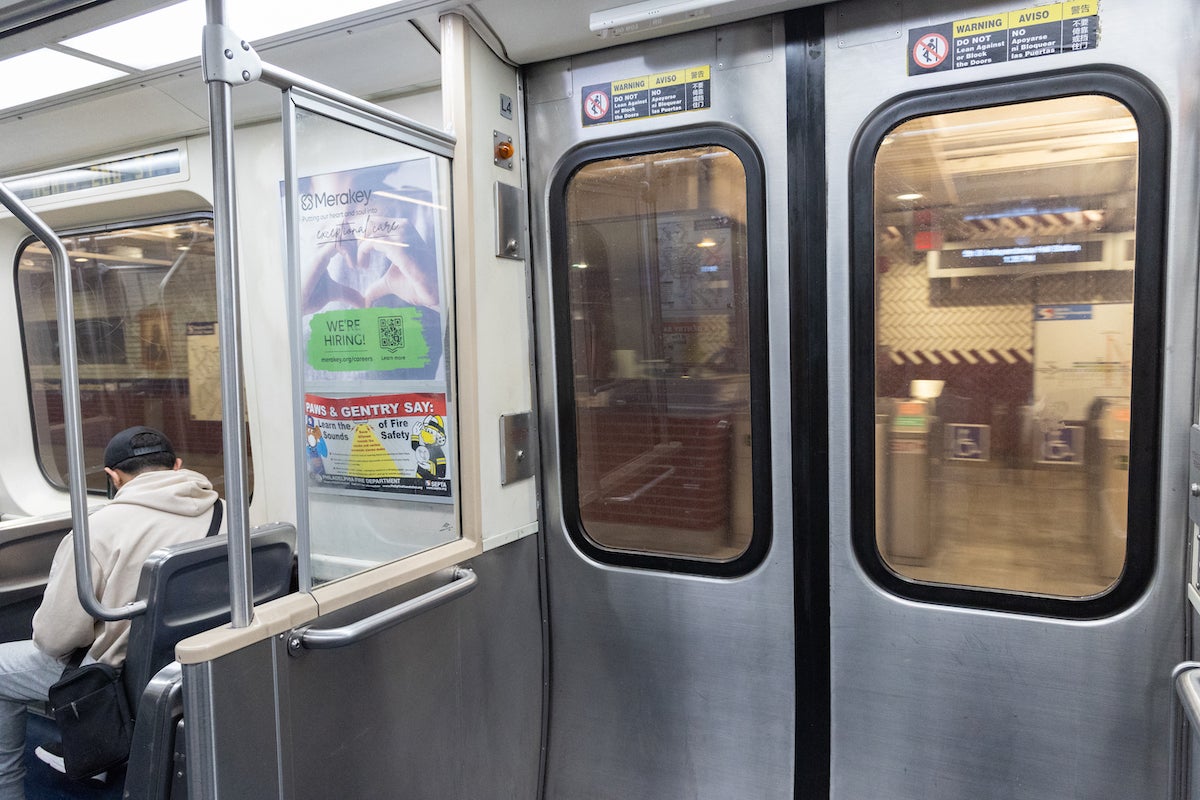Infra
Would Philly’s transit anxiety persist even in a clean, non-violent SEPTA system?

From Philly and the Pa. suburbs to South Jersey and Delaware, what would you like WHYY News to cover? Let us know!
Like the width of a sidewalk or the connectedness of bike lanes, the way public infrastructure is constructed not only physically and socially impacts users, but mentally, too. For public transportation in Philadelphia, the system’s built environment is enough to keep some riders away.
According to a YouGov survey from last year, 39 percent of Americans think that buses, trolleys, and trains in major cities are too dangerous to ride. When a system like SEPTA has a month like March when 15 riders were shot in the space of four days, passengers already primed to be on alert can feel their anxiety spike. But it isn’t just weapons and overflowing trashcans; some riders are nervous before even entering public transit. Anxiety about the material environment of the system can be felt like a concertgoer who prefers an open-air daytime show over a packed underground concert hall at night.
Public spaces like SEPTA’s subway network can cause anxiety for many reasons, but much of that fear is a result of human hard-wiring. Because safety violations within the SEPTA system tend to get a lot of attention, Philadelphians are more likely to be emotionally reactionary in these environments and to make negative associations, according to Yvette Sheline of the University of Pennsylvania’s Department of Psychiatry. Innate alertness has some passengers associating stations, stops, and seats with the threat of violence.
“If you’re not being conditioned to think about things in a fearful way, then it is going to be much less prominent in your thinking,” Sheline said.
Although ridership has increased in the past two years, SEPTA is still working to reach pre-pandemic levels. As federal emergency aid began to run out this year, the authority found itself staring at a $200 million financial gap.
SEPTA again delayed an overhaul of its bus system, which they say could have brought riders back. Pennsylvania Governor Josh Shapiro rallied state legislators to close the hole. Still, it’s unclear whether SEPTA has the funds to keep running as-is or how deep the authority’s leaders would have to cut service without it. A spokesperson said because the agency has been historically underfunded and operates an aged subway system, infrastructure improvements for safety such as more accessible stations are a long-term challenge.
Sheline, who heads the Center for Neuromodulation in Depression and Stress at Penn, believes that if there were less fear in the public discourse around transit, people’s anxiety would decrease.
There is a big difference between feeling anxious in a public place and getting worked up about being in that setting in the future, Sheline said. When people are planning to use public transit, they can choose to remember past positive experiences and feel better about riding. Once they’re in the subway station or on a crowded bus, they feel more vulnerable, more anxious, and less able to think their situation through, Sheline said.
From gates and sidewalks to subterranean hallways, the physical environments that make up a transit system can affect how safe people feel using them. Sheline says even the cleanliness of SEPTA’s vehicles and stations can determine what riders think about them. Built elements that comprise SEPTA’s subway system are what cause some riders to be more susceptible to anxiety, specifically those who have fears of enclosed spaces — a feeling more common than most people realize and one that doesn’t surprise Sheline.
Anastasia Loukaitou-Sideris, the interim dean at U.C.L.A.’s Luskin School of Public Affairs, says there is a natural element of openness to a public transportation system’s inclusivity that serves as a sign of a democratic society. But that same openness, Loukaitou-Sideris said, is also what gives transit hubs their inherent risk.
“If we all start getting afraid of agoraphobia and not going to these public spaces, we will end up in a cocoon of private spaces,” Loukaitou-Sideris said.

Professor Loukaitou-Sideris, who specializes in transit safety and studied SEPTA during the COVID-19 pandemic, is encouraged by Philadelphia’s Hub of Hope. The center serves as a space within the SEPTA system for unhoused individuals to receive essentials such as food and medical care.
Due to the open nature of public transit, for some, the system has become defined by the unwanted elements of cigarette butts and residue it encompasses.








